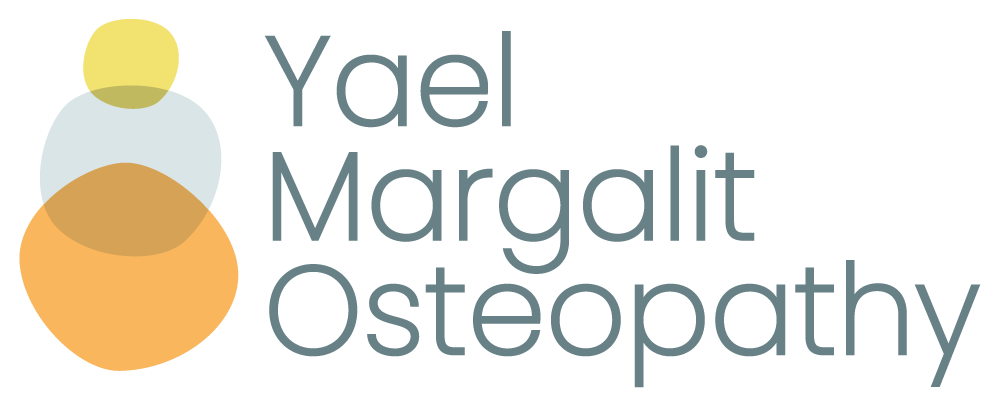How Osteopathy Can Help With Pelvic Girdle Pain During Pregnancy
What is Pelvic Girdle Pain (PGP) in Pregnancy?
Pelvic girdle pain — often called PGP — is one of the most common pregnancy complaints I see in my Dublin clinic. During my osteopathic degree I researched and wrote an in-depth case report on PGP, so it’s a condition I understand both academically and clinically.
Pelvic girdle pain (PGP) can show up in several parts of the pelvis:
Lower back (although not strictly considered part of the pelvis)
Hips
Sacroiliac joints (at the back of the pelvis)
Pubic symphysis joint (at the front of the pelvis)
Pubic symphysis pain (PSP) is when pain appears only at the front of the pelvis. True PSP is less common than general PGP but research shows it is usually more severe and debilitating (Flack, 2020; Malmqvist, 2021).
Around 1 in 5 expectant mothers experience PGP, though the exact number depends on how it’s measured (Vleeming et al., 2008; Starzec et al., 2019). For some women, PGP shows up only with certain movements. For others, it can be constant.
No matter what your experience, it’s valid and I understand how debilitating it can be, particularly during the tender time of pregnancy.
Common Symptoms of PGP
Pain that can stay local around the pelvis or radiate into the thighs or buttocks
Shooting, grinding or “shearing” sensations in the pelvis
Pain that worsens with walking, climbing stairs, turning in bed or standing on one leg
Disturbed sleep from pain at night
A sense of instability or pressure in the pelvis
What Causes PGP?
Traditionally, hormones (particularly relaxin) were blamed for PGP. While hormones have a lot to answer for in pregnancy, they cannot be solely blamed for this condition. We now know PGP usually comes from a mix of factors:
Biomechanical changes: As your bump grows your center of gravity shifts. This can place uneven stresses through the pelvic joints.
Muscle and ligament adaptation: Muscles like the glutes, abdominals and pelvic floor play a huge role in pelvic stability. If they are overworking, fatigued or not coordinating well, PGP can follow (Vleeming & Schuenke, 2019).
Hormones: Research suggests hormones are just one part of the picture. Relaxin help prepare the body for birth by softening ligaments and this can also reduce joint stability. (Aldabe et al., 2012; Malmqvist, 2021).
Biopsychosocial factors: Stress, fatigue and worry can all amplify how pain is experienced (Beales et al., 2020).
Why it Matters
While PGP is not dangerous for your baby, it can be very limiting for you. It may affect how long you can walk, how well you sleep or even your confidence in moving freely. Left unmanaged, it can also make daily life harder and take a toll emotionally.
The good news is that with the right support, movement strategies and hands-on care, most women see real improvements — even during pregnancy.
How Can Osteopathy Help With PGP?
Osteopathy is a safe, gentle and completely drug-free way to ease the aches and pains of pregnancy. With hands-on techniques such as soft tissue therapy, fascial release and craniosacral therapy, I work to:
Release tension in the muscles of your hips, back and pelvis
Restore movement and alignment to the pelvic joints
Take pressure off irritated tissues and ligaments
Support better posture as your bump grows
Every treatment is tailored to you and I also guide you through supportive exercises you can do at home to stay strong, mobile and comfortable between sessions.
If you would like to learn more about pregnancy care at my clinic or explore whether it might help you, please get in touch or book an appointment.
📖 Further Reading & Resources
If you’d like to explore more about pelvic girdle pain in pregnancy, here are some useful studies and resources that support what I’ve shared in this blog:
How common is PGP?
Research shows that around 1 in 5 women experience pelvic girdle pain during pregnancy, although this varies depending on how it’s measured (Vleeming et al., 2008; Starzec et al., 2019).Why pelvic stability matters
The sacroiliac joints and pelvic muscles play a huge role in keeping the pelvis stable and balanced as the body adapts to pregnancy (Vleeming & Schuenke, 2019).Is it just hormones?
Hormones like relaxin do contribute to changes in the ligaments, but they are not the only factor behind pelvic girdle pain. Research shows that biomechanics, muscle changes and emotional wellbeing are also involved (Aldabe et al., 2012; Malmqvist, 2021).The role of stress and emotions
Studies also highlight that stress, fatigue and worry can amplify how pain is felt, showing that pelvic pain is influenced by both body and mind (Beales et al., 2020).Pubic symphysis pain (PSP)
When pain is only at the front of the pelvis, it is called pubic symphysis pain. Although less common, it is usually more severe and can be very limiting for expectant mothers (Flack, 2020; Malmqvist, 2021).


